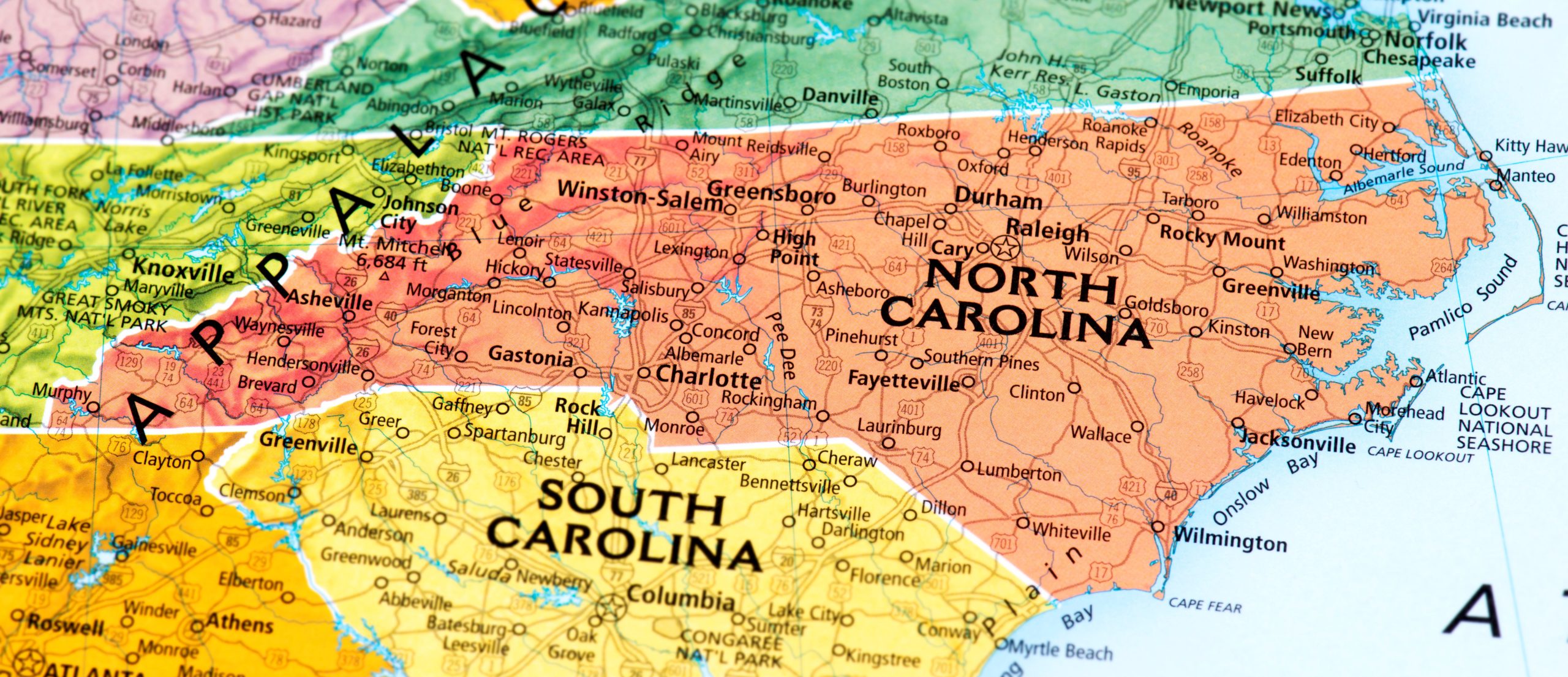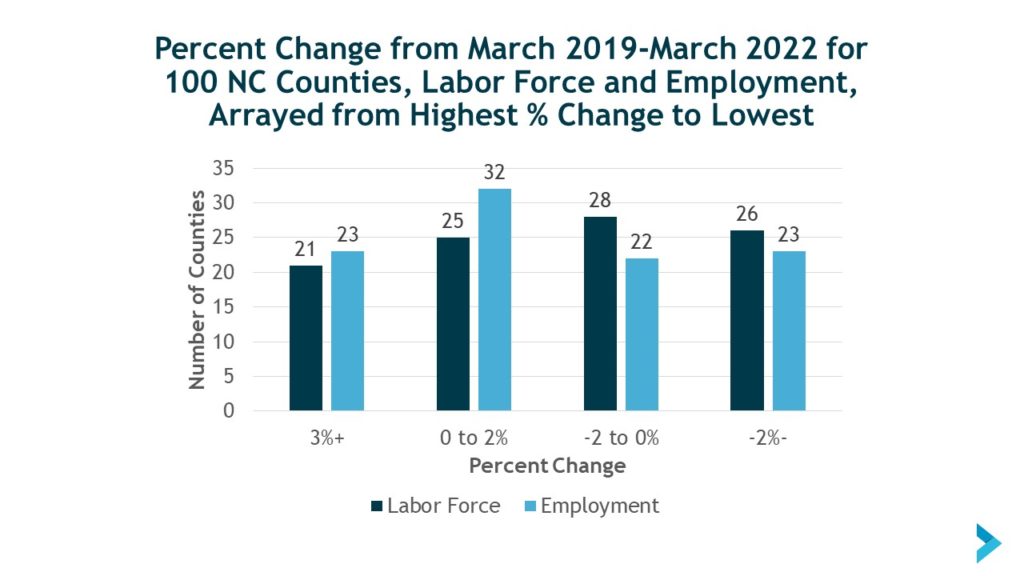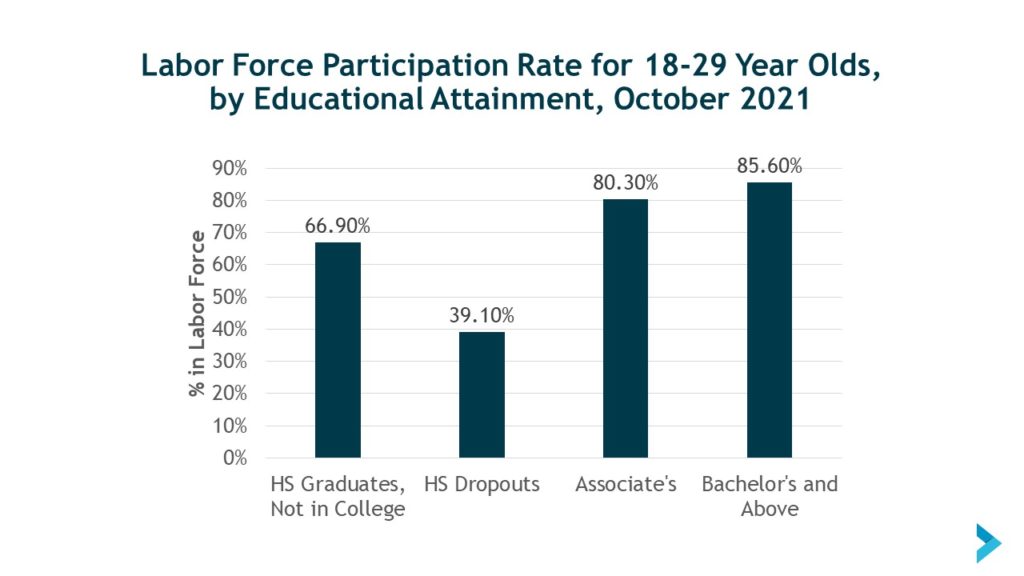What County-Level Data Tells Us About Labor Force Trends

Welcome to our first edition of the NC Chamber Foundation Forecast. I am pleased to work with Dan Gerlach, economic advisor to the NC Chamber Foundation, to provide you with a perspective on some of the latest economic data out of our state.
The NC Chamber Foundation is driving a future-focused vision to expand economic growth and prosperity for all North Carolinians. We will continue to take a business-led approach to the biggest issues facing our state, all while watching and reporting what the data and trends are telling us about our progress.
Last week, the NC Chamber Foundation’s recently launched Institute for Workforce Competitiveness convened members from several NC Chamber committees to identify successful workforce strategies that can be scaled to serve more businesses and communities statewide. That discussion is crucial as we contemplate the reality painted by the following forecast, coupled with the consistent feedback from our membership.
Bottom line: workforce solutions will require a focused alignment from our business community, and we are prepared to lead in that capacity. I look forward to our continued collaboration.
Meredith Archie
President
NC Chamber Foundation
What County-Level Data Tells Us
About Labor Force Trends
We’ve heard from employers that workforce and talent supply is their top concern as they plan for the future, and recent data backs this up as we see the labor force fall in more than half of North Carolina counties.
Data released last week gives some insight into North Carolina labor-force trends at the county level, as well as the national trends around recent high school graduates.
The N.C. Department of Commerce releases estimates of employment, unemployment, and total labor force at the county level every month, based on a monthly survey of households conducted by the U.S. Bureau of Labor Statistics. March 2022 county-level data was released last week.
The chart below shows the range in the percent change in employment and labor force for our state’s 100 counties from March 2019 to March 2022. The data labels reflect the number of counties in that range. The statewide average was a growth of 2 percent in labor force and 2.3 percent in employment. When looking at this, there are two things that stand out. First, most counties have fewer people in the labor force than three years ago (sum of the two right-hand darker blue bars: 28+26 = 54 counties). Second, in the counties reporting labor-force growth (sum of the two left-hand darker blue bars: 21+25 = 46 counties), employment opportunities are still increasing at a faster pace.
When looking at this, there are two things that stand out. First, most counties have fewer people in the labor force than three years ago (sum of the two right-hand darker blue bars: 28+26 = 54 counties). Second, in the counties reporting labor-force growth (sum of the two left-hand darker blue bars: 21+25 = 46 counties), employment opportunities are still increasing at a faster pace.
TOP TAKEAWAY: Faster growth in employment than labor force was the case for 78 counties over the past three years. That means the unemployment rate fell in those counties, and fewer people without a job are actively looking for work. The unemployed in the survey do not reflect all working-age adults without a job, but only those working-age adults actively looking for work.
The Bureau of Labor Statistics released their annual report on college enrollment and work activity of recent high-school and college graduates last week.
Recent college graduates – whether at the associate’s, bachelor’s, or postgraduate level – have much higher labor force participation rates. The graph below compares labor-force participation across education levels, with the latest overall North Carolina labor-force participation rate included as reference only, although not for the same time period.

TOP TAKEAWAY: Educational attainment is positively related to labor force participation. As the Institute for Workforce Competitiveness connects businesses with the education workforce system, it’s critical to reinforce high school and postsecondary completion to not only help increase workforce skill levels but also openness to work. These actions play an important role in defining the connection to employment through education.
Despite the labor force challenges the data is showing, businesses are taking ownership of their workforce pipelines. The Institute for Workforce Competitiveness is uniquely positioned to connect businesses with one another, workforce and education systems, and other organizations to build greater regional and industry synergies and spotlight successful initiatives across the state. We want to hear from you on how you are tackling these issues and how we can support your efforts.